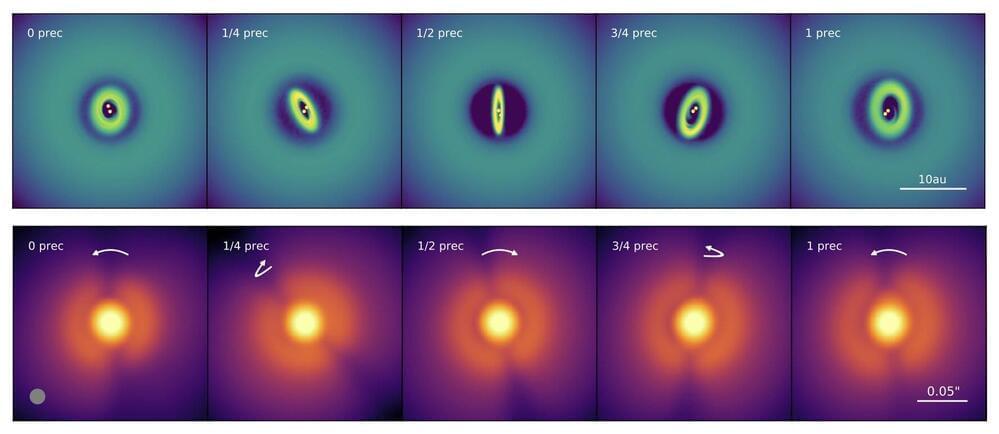Astronomers from the University of Warwick reveal a new phenomenon dubbed the “rocking shadow” effect that describes how disks in forming planetary systems are oriented, and how they move around their host star. The effect also gives clues as to how they might evolve with time. Dr. Rebecca Nealon presented the new work this week at the 2022 National Astronomy Meeting at the University of Warwick.
Stars are born when a large cloud of gas and dust collapses in on itself. The leftover material that doesn’t make it into the star ends up circling around it, not unlike how water swirls around the drain before falling in. This swirling mass of gas and dust is called a protoplanetary disk, and it’s where planets like the Earth are born.
Protoplanetary disks are often thought to be shaped like dinner plates—thin, round and flat. However, recent telescope images from the Atacama Large Millimeter/Submillimeter Array (ALMA) show that this is not always the case. Some of the disks seen by ALMA have shadows on them, where the part of the disk closest to the star blocks some of the stellar light and casts a shadow onto the outer part of the disk. From this shadow pattern, it can be inferred that the inner part of the disk is oriented completely differently to the outer part, in what is called a broken disk.
